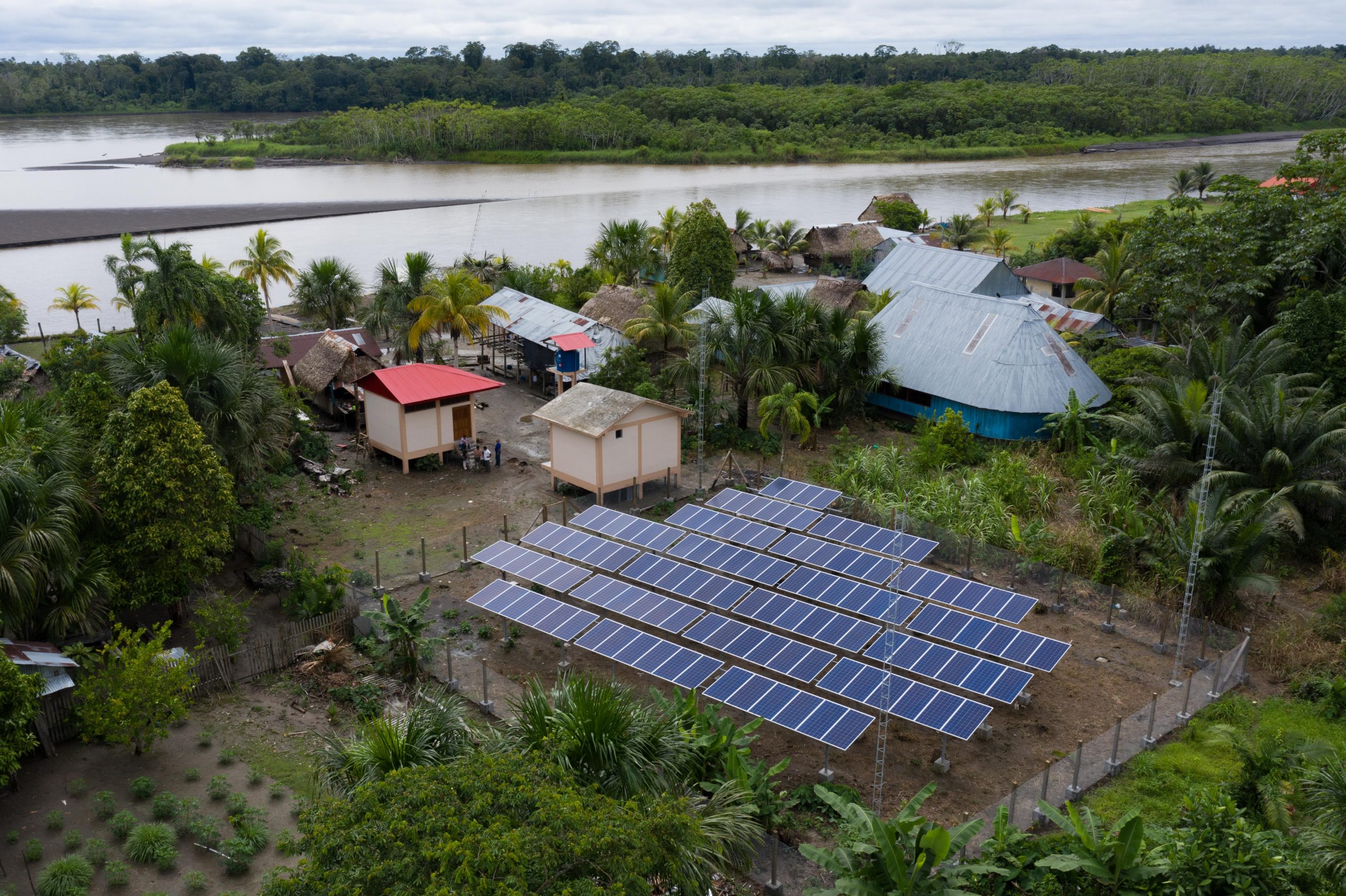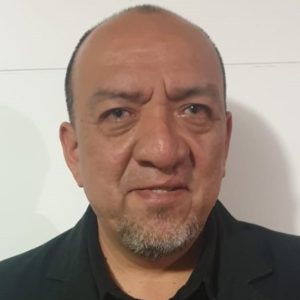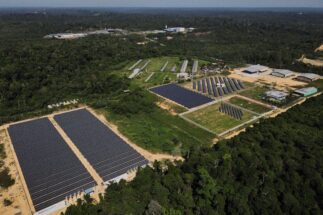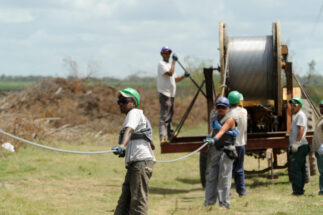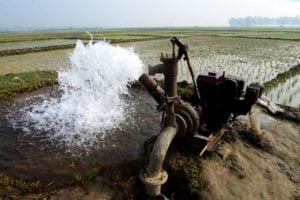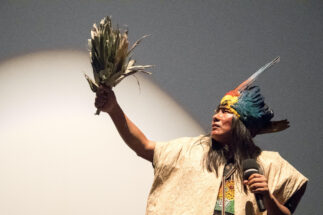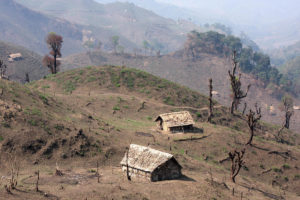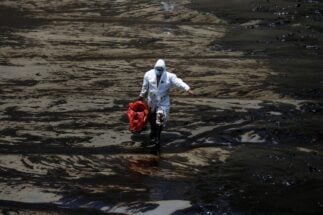Unlikely as it may seem, there is no shortage of energy in the Peruvian Amazon. While less than 20% of the 2,703 native communities who call this tropical forest home have electric lighting connected to the public grid, this significant deficit has been compensated with communal energy sources such as generators or solar panels, which are found in at least 840 communities. Against this backdrop, renewable energies have over the last 10 years been emerging as a way to bring power to a greater proportion of Amazon households, a population that has often felt forgotten.
“The potential of renewable energies for the Amazon is enormous,” Miguel Incháustegui, Peru’s former Minister of Energy and Mines, told Diálogo Chino. “Currently in this region the largest proportion of energy is obtained from the use of fossil fuels, which is detrimental to health and the environment. It is necessary and urgent to promote renewable energies with greater emphasis so that they can be used more widely.”
In recent years, several initiatives have duly been launched to promote and provide access to renewables in Amazonian communities. Diálogo Chino recently visited some of the most prominent projects, which have made use of solar power to improve access to education, brought electricity to schools, homes and health centres, and supported community business with sustainable sources of energy.
Radios that educate
During the first two years of the Covid-19 pandemic, education was one of the most affected sectors in Peru, with the country enforcing some of the world’s strictest lockdown measures. Although the Peruvian state promoted learning programmes through television, radio and the internet, and distributed more than a million tablets with educational content nationwide, in its Amazon regions, some 42% of children and young people between the ages of 6 and 16 were unable to attend classes due to lack of electricity and connectivity.
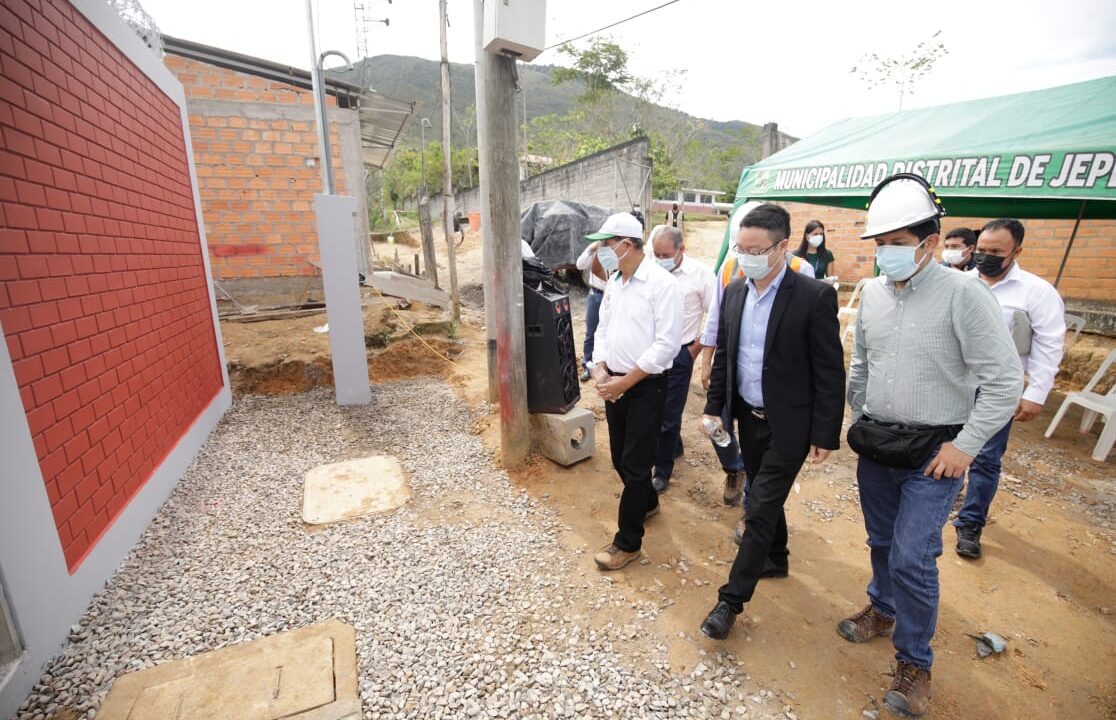
According to INEI, Peru’s national statistics agency, around 2,604 native communities in the Amazon have some form of educational institution, of which 17.1% (444) are connected to the national grid, 13.7% (358) use solar panels, while 64.3% (1,675) have no access to any of these services.
Many households, health centres and educational institutions in the Peruvian Amazon use generators as a source of energy, which are expensive and run on gasoline, a fuel that is often unavailable. As a result, communities spend a large part of their often meagre income on fuel and maintenance of these generators.
In 2021, the Apostolic Vicariate of Iquitos, a Catholic mission based in Iquitos, the largest city in the Peruvian Amazon, set out to improve access to education by developing and distributing solar-powered radios for young people to follow the lessons offered by the Ministry of Education and the authorities of the Loreto region. Children could access these through local radio stations and the vicariate’s own radio station, La Voz de la Selva (The Voice of the Jungle).

Since 2021, 6,000 radios have been distributed in 54 rural communities across the vast department of Loreto, by far Peru’s largest region, but also its most sparsely populated.
“The radios are eco-friendly. They are made of recyclable material and have built-in solar panels and rechargeable batteries, which enhances their use,” Fuertes added. The radios do not rely on batteries and, compared to computers and phones, are relatively inexpensive, with each one costing US$20–25 to make. The next stage of the vicariate’s plan is to build 16 solar-powered radio stations across the Loreto region.
Light Up the Amazon
Also interested in bridging the inequality gap in education is Light Up the World, a Canadian charity that launched its Light Up the Amazon project in 2020. After identifying and assessing Indigenous communities without access to electricity, they decided to implement electrification projects using solar systems in Soledad, Cucuasa and Dos de Mayo, communities of the Wampis nation, located in the district of Rio Santiago in Peru’s Amazonas region.

The schools currently have systems ranging from 500 to 1,300 watts of solar modules installed, enough to simultaneously power small appliances such as fans, lighting and computers. Electrics were installed in each of the classrooms, offices and bathrooms, with 5 W bulbs and sockets for the use of laptops, mobile phones, TVs, radios and projectors.
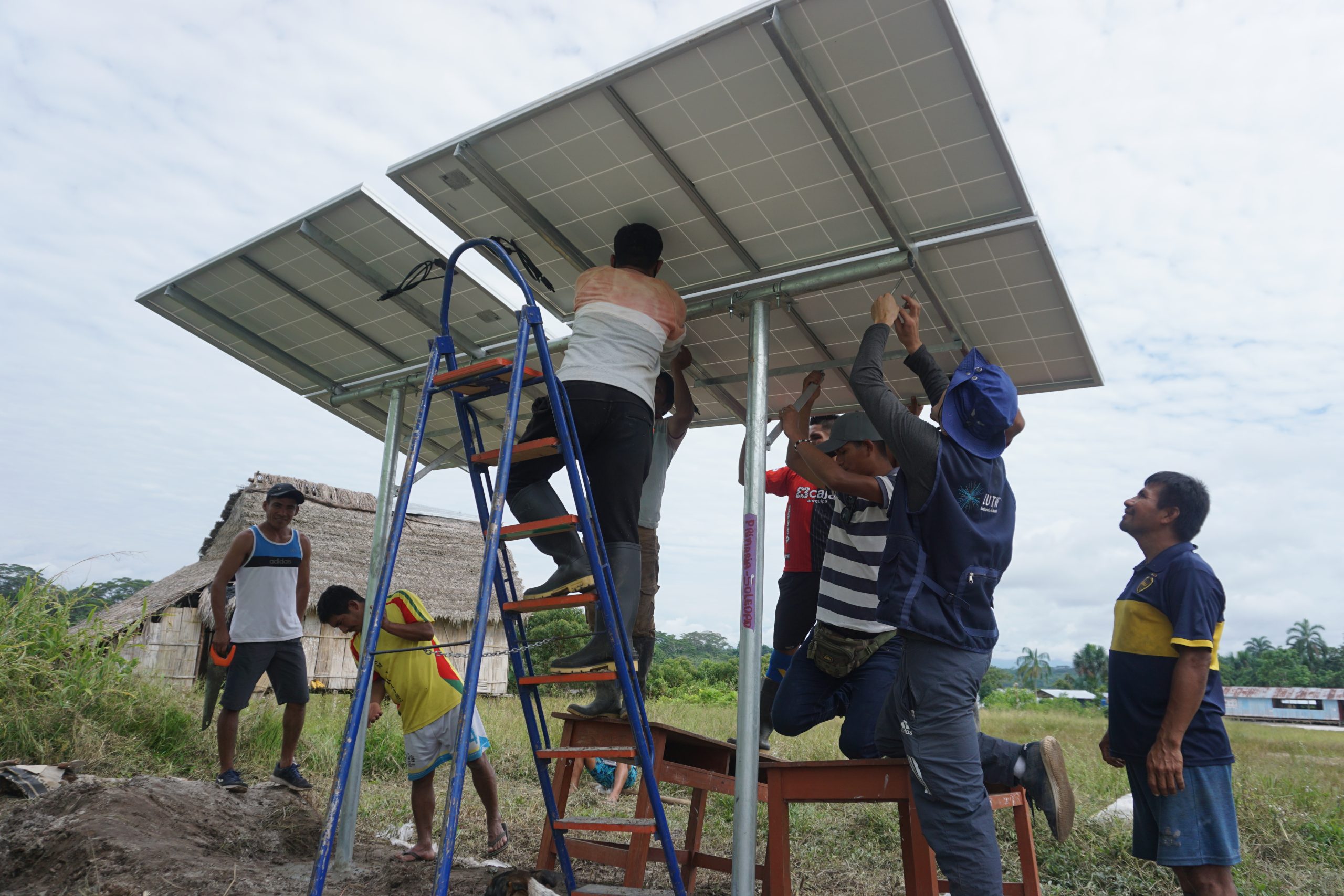
The charity is currently raising funds to electrify two more schools in Rio Santiago.
Light at home
Created by the Acciona Foundation, a Spanish organisation promoting energy and water access, Acciona Peru leads the group’s Amazon Light at Home project. In 2021, it commissioned a solar plant in the native community of Copal Urco, of the Indigenous Kichwa people, in the Napo River basin, also in the Loreto region. With an installed capacity of 33.5 kW, it provides electricity to 60 households, community premises and street lighting. The homes receive six hours of light a day, three hours more than before. Schools, the health centre and the community centre have 24-hour electricity, and street lighting lasts for three hours.

The project also aims to avoid the emission of more than 50 tonnes of CO2 per year, and its 110 kWh lithium-ion battery electricity storage system is key to this. Diesel, the fuel of frequent resort for generators, is relegated to emergency-only use, should there be a failure in the photovoltaic system.
“Our business model is a social micro-enterprise,” Jessica Olivares, manager of Acciona Peru, told Diálogo Chino, adding that both sustainable economics and welfare are important to the project. “We charge an affordable fee for the service we provide.”
According to the project’s calculations, the inhabitants of Copal Urco used to spend between US$5 and US$7 a month on energy, buying diesel, candles and paraffin. Now, their quarterly spend is US$2.5.
These households are served through the Light at Home centre, run by a local entrepreneur who has been trained by Acciona to carry out the work, from advice, repair or management of the panels, to the generation of prepaid codes for unlocking the systems and the sale of electrical appliances.
The prepaid facility provides flexibility for families, allowing them to buy in advance a quantity of energy to be consumed within no set time frame. “When it is about to run out, the user receives a text message, sent by the prepaid software linked to his or her home’s meter with a warning,” Olivares explained.
Fresh fish
The Pastaza River that flows through the northwest of the Peruvian Amazon is rich in aquaculture resources, which have long been exploited by native communities in the province of Datem del Marañón.
These communities fish for both food and income. In order to preserve their catches, and allow them to last at least a month, most use large quantities of salt. This practice is useful for local consumption, but not for commercialisation, which requires them to meet other quality standards.
It is in this context that Profonanpe, the most significant private environmental fund in Peru, launched a project to build economic and environmental resilience in the wetlands of Datem del Marañón. Since 2019, they have promoted changes in communities’ commercialisation model through the use of more efficient mechanisms based on clean technology.

During 2021, Profonanpe provided 240 solar panels and built two solar-powered ice plants in the Kandozi Indigenous communities of San Fernando and Musa Karusha. The plants – built at a cost of approximately US$400,000 each – treat river water for purification and industrial use, filtering and storing it before processing, with the treated water then compressed into moulds that are frozen to produce blocks of solid ice. The plants operate 14 hours a day and can produce 30 kilowatts (kW) of energy, with 10 kW of capacity being used to date.
Fishers in these communities are now able to move tonnes of fresh fish at lower cost and in a more sustainable way.
For now, the development of sustainable projects in the Peruvian Amazon is being driven by private and international cooperation, with government assistance notably lacking, said Pedro Gamio, a former vice-minister of energy. He stressed that private companies have shown willingness to invest in clean energy at a larger scale, but lamented the lack of political will from the Peruvian state.
“We have been talking about renewable energies for a long time, but we are not making as much progress as our neighbouring countries,” Gamio told Diálogo Chino. “There are also a lot of bureaucratic barriers, and a lobby that comes from fossil business interests.”
